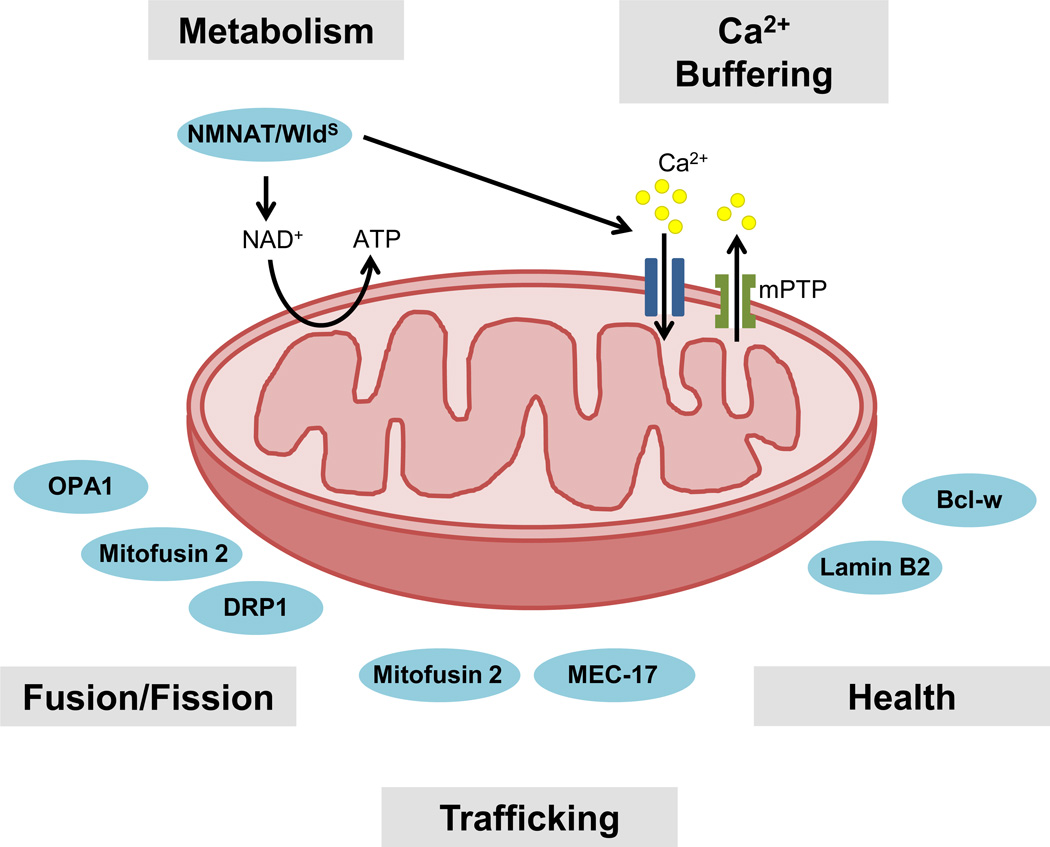Figure 3.
Mitochondria are central to axon health and homeostasis. The interdependent mitochondrial processes of metabolism and calcium buffering maintain axonal health and are impaired by injury and disease. WldS, a chimeric fusion of the enzyme NMNAT1 and the ubiquitination factor E4B, delays axonal degeneration induced by injury and disease. NMNAT/WldS produces NAD+, which is used by mitochondria to produce ATP. NMNAT/WldS may promote axonal survival by preventing injury-induced loss of NAD+ and ATP [61]. Innate mitochondrial calcium buffering maintains calcium homeostasis and is overwhelmed by axon injury, resulting in formation of the mPTP and increased axoplasmic calcium levels [12,70,71,73]. NMNAT/WldS increases the calcium buffering capacity of axonal mitochondria [67], possibly by increasing ATP synthesis [61]. Several processes are necessary for mitochondrial function and localization, including fusion and fission, mitochondrial trafficking, and maintenance of mitochondrial health by the proteins Lamin B2 [76] and Bcl-w [4]. Mutations in the α tubulin acetyltransferase MEC-17 and the fusion and fission proteins OPA1, Mitofusin2, and DRP1 are implicated in axon degenerative diseases [79–81]. Abbreviations: ATP, adenosine triphosphate; Ca2+, calcium ion; DRP1, GTPase dynamin-related protein 1; mPTP, mitochondrial permeability transition pore; NAD+, nicotinamide adenine dinucleotide; NMNAT, nicotinamide mononucleotide adenylyltransferase; OPA1, optic atrophy 1; WldS, Wallerian degeneration slow protein.

